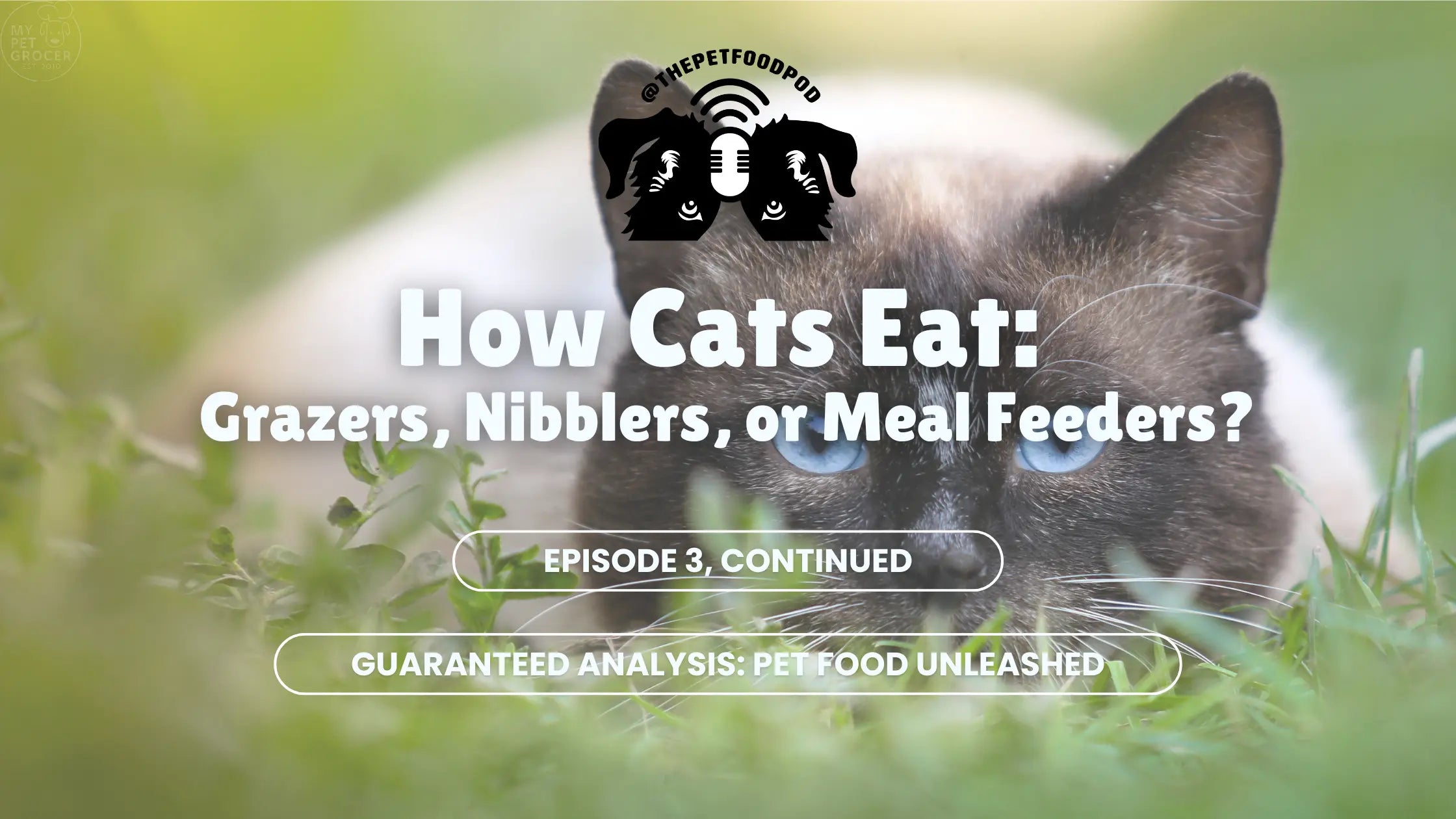
How Cats Eat: Grazers, Nibblers, or Meal Feeders?
Cats don’t eat like dogs—and they definitely don’t eat like humans. Unlike their canine counterparts, who tend to inhale their meals in seconds, cats are natural grazers and nibblers, preferring to eat small amounts throughout the day. This instinct comes from their wild ancestors, who hunted multiple small prey rather than feasting on large meals. But does that mean free feeding is the best approach? In this post, we break down the pros and cons of grazing vs. meal feeding, plus tips on how to create a feeding routine that aligns with your cat’s natural instincts and their health needs.

If you’ve ever had cat, you’ve probably noticed they don’t devour their meals all at once like a dog might. Instead, they take a few bites, wander off, and return later for more. This isn’t just a quirky behavior — it’s how cats are designed to eat.
The Natural Instinct to Graze
In the wild, cats are solitary hunters, catching small prey like mice, birds, and insects throughout the day. Their natural eating pattern consists of multiple small meals — sometimes up to 8-10 times a day. Unlike dogs, who evolved as scavengers and can go long stretches without food, cats are built for frequent, small portions.
This grazing behavior makes sense for their metabolism:
✔️ Cats have a high protein requirement and need a steady intake of amino acids.
✔️ Their metabolism is constantly producing glucose (gluconeogenesis), so they rely on consistent nutrient intake.
✔️ They don’t binge eat like dogs — instead, they eat to meet their immediate energy needs.
Free Feeding vs. Meal Feeding
Because cats prefer to nibble, some owners choose free feeding, where dry food is left out all day. This method mimics their natural grazing behavior, but it comes with risks:
🚨 Harder to monitor how much your cat is actually eating.
🚨 Can contribute to obesity, especially in indoor cats.
🚨 Makes it difficult to detect early signs of illness (like appetite loss).
On the other hand, meal feeding (offering food at set times) allows better portion control and monitoring. But is it too unnatural for cats? Not necessarily! Cats can adapt to meal feeding if started young or introduced gradually.
The Best of Both Worlds: How to Feed a Cat Effectively
If you want to balance natural behavior with healthy eating habits, consider:
🐱 Measuring daily portions but offering multiple small meals.
🐱 Using puzzle feeders or food-dispensing toys to encourage natural hunting behavior.
🐱 Mixing textures (kibble, canned, freeze-dried) to prevent food aversions, especially when they are young.
🐱 Tracking intake — especially in multi-cat households, where one cat might eat more than their share.
The bottom line? Cats aren’t small dogs — they have unique eating habits that should be considered when choosing how and what to feed them. Whether you free-feed, meal-feed, or use an interactive method, the goal is to support their natural instincts while ensuring they get the right nutrition.
Want to learn more? Listen to episode 3 of Guaranteed Analysis: Pet Food Unleashed.